Americans tend to be fond of stop signs and electric traffic lights—after all, we invented them—and we’ve installed them by the millions, leaving other setups, such as roundabouts, to the rest of the world.
However, roundabouts are actually safer and more efficient than traditional intersections, so it’s no surprise the U.S. is (finally) coming around to them. A study by the Insurance Institute for Highway Safety found that injury crashes decreased by 85% at intersections where stop signs and traffic signals were replaced by roundabouts, and a study in Minnesota states that roundabout intersections showed an 86% decrease in fatal crashes. “The most deadly type of crash is the right-angle crash,” explains Derek Leuer, a traffic safety engineer at the Minnesota Department of Transportation. “At roundabouts, it is nearly impossible for a right-angle crash to occur.”
If your city or town is going in circles, but you haven’t seen a roundabout since your driver’s ed handbook, here’s a refresher on how to mind your manners while making your way around.
Recognize The Roundabout
These tips apply to modern roundabouts, which are different from traffic circles (also known as rotaries) and traffic calming circles. Traffic circles have a very large center island and are entered in a straight line; traffic calming circles have a small center island and are mostly used instead of four-way stops to slow traffic in residential neighborhoods. Roundabouts are medium-sized, entered on a gentle curve and can be used at a variety of intersections.
Know When To Yield
When entering a roundabout, yield to traffic already in the circle and merge when it is safe. When exiting, remember to yield to pedestrians in crosswalks (it’s not just the polite thing to do, it’s the law).
Go Slow But Don’t Stop
Part of what makes roundabouts safer and more efficient is that they’re designed to be navigated at a slow, steady pace, so don’t stop once you’ve entered the roundabout. If you miss your exit, simply circle around again. If you see or hear an emergency vehicle approaching, proceed to your exit and then pull over to let it pass.
Pick A Lane And Stay There
“The general practice is to stay in your lane once you enter the roundabout,” says Leuer. Single-lane roundabouts make it easy, with only one lane choice. For multi-lane roundabouts, a sign before the intersection should tell you where you want to be. Usually, drivers turning left should get in the left lane, those headed right should get in the right lane, and drivers going straight can do so from either lane, Leuer adds.
Stay Off The Center Island
Large vehicles like semi trucks and buses may need a little more room to turn, so many modern roundabouts are designed with a raised section of concrete around the center island known as a truck apron. If you’re driving a regular vehicle, you probably don’t need to use the apron to get your back wheels around the bend, so leave it free for those who do.
Give It Time
Even if you find the roundabout strange at first or miss having a moment to fiddle with the radio at red lights, give the new intersection a chance. “Minnesota may have crossed a tipping point with roundabouts,” reports Leuer. “We are seeing more requests for roundabouts and citizens even asking why a roundabout isn’t being considered. They are becoming increasingly popular due to their safety, efficiency and economic benefits.”
Before you hit the road, make sure you’re covered for the unexpected by adding Emergency Roadside Service to your GEICO car insurance policy, available at your fingertips through the GEICO Mobile app.
Read more: Planning a trip abroad? Here’s how to prepare to navigate foreign roads.

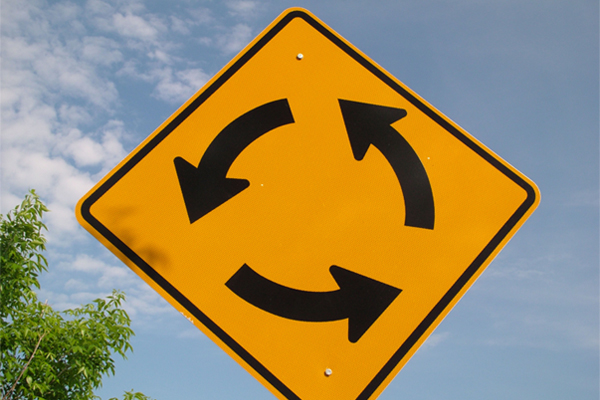


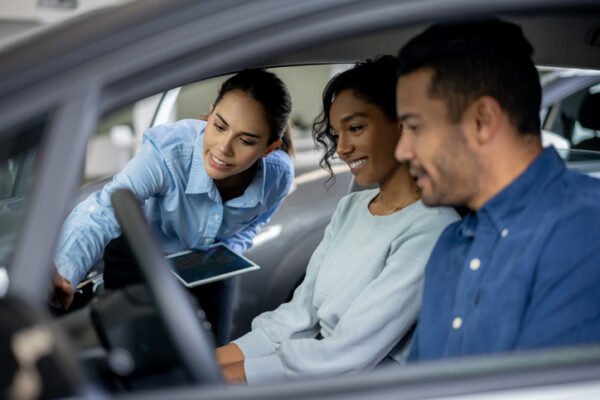
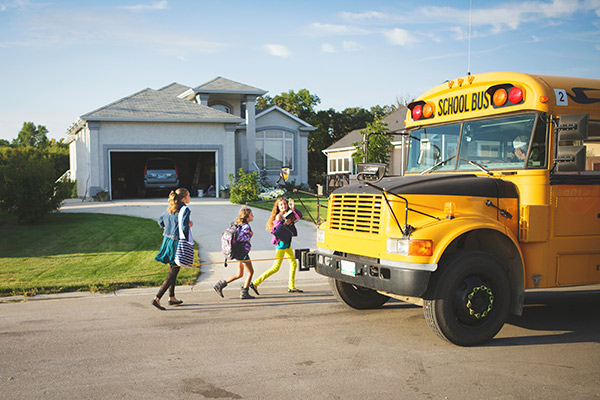

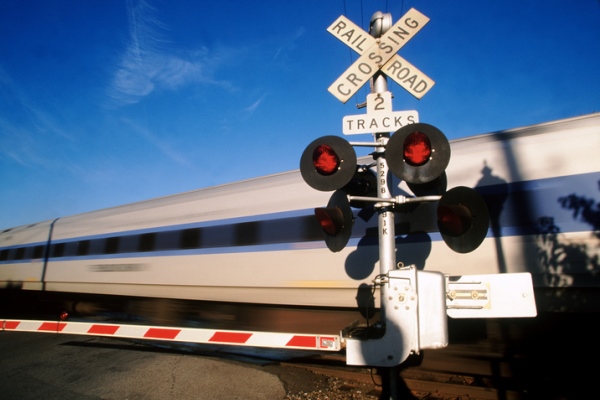
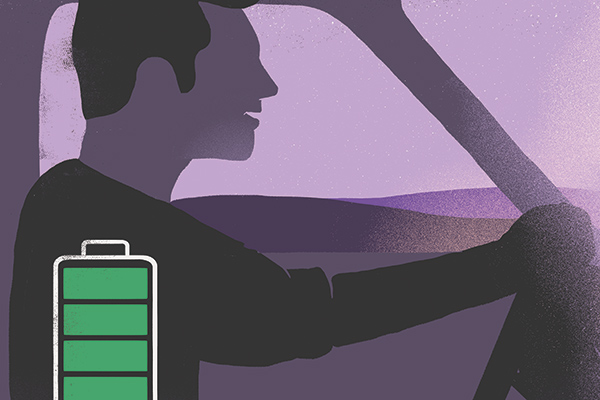
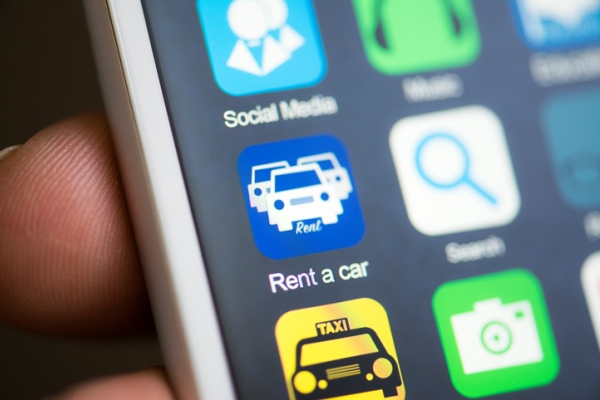
Robert Payne says,
SAFETY!
LEAD CAR HAS RIGHT-AWAY
(Minimum 20-50 ft separation!)
If your front bumper hits the back of LEAD car, it is YOUR FAULT!
Sports Car Racing Association has this simple rule. It works!
Jay says,
The Federal Highway Administration and US Department of Transportation Endorse roundabouts. Based on research and evidence here in the U.S. roundabouts significantly reduce injury and fatality collisions at intersections compared to two-way stops and traffic signals. The FHWA Office of Safety has actively supported roundabouts for over 10 years. The video on this page has several flaws and does not represent a modern roundabout. Lanes are configured at modern roundabouts where nobody should change lanes once inside the circulatory roadway. What is lacking here in the U.S. is driver training. #YieldIsYourShield
MyDarlin says,
You left out a very important part of using a traffic circle…. USE YOUR BLINKER WHEN EXITING.
CeK says,
Driving in the north shore of Hawaii in Haleiwa we came to a roundabout that had a stop sign on the inside. https://www.google.com/maps/@21.5762201,-158.1061618,132m/data=!3m1!1e3?hl=en that probably causes more accidents than anything else because if you follow the rules that the vehicle inside the circle has the right and the vehicle entering gives way the stop sign messes that all up and I actually ( unintentionally ) blew through the stop sign twice because it is not expected to be there.
Suzanne says,
I think roundabouts are genius – unfortunately, all who use them are not. If there’s no traffic on the left, just drive right in!! Good grief, don’t stop first – the whole idea is to keep traffic moving!
CLE Girl says,
There is usually a stop sign where you enter the circle, so yeah….
Richard says,
The other commenters here have made good points, I agree with them all and would rather not travel in roundabouts.
Russell Joseph says,
I appreciate the video. I hope everyone else who I encounter in a roundabout watches this video. I go slow and wait for all the aggressive people to get through the circle and then I go !
Regards!
Charles H Matthews says,
I don’t know who invented roundabout but they do not improve traffic flow they are designed to allow all the traffic on the left to go ,all day long without anybody else goes thru, I hate them bad idea.
Richard Stapler says,
Good Info. Thank you
Mike DeMaria says,
I usually close my eyes when I go around one. It’s much less stressful.
Steve says,
Roundabouts are inherently dangerous because of American driving habits. Many people refuse to yield-they interpret the yield sign as “we’re racing for the position.” They drive too fast all the time, bad weather or not. Stay in your lane, that’s a joke right, they drive all over the place, usually without a signal. They have recently started using these traffic circles in my state. I wish they had left them in Europe.
Diane says,
They are the most dangerous things around , People pull into them cutting people off , people tailgate and don’t let people exit we got caught in a. Couple in the DC area they had multiple lanes in them they should never be made or used
JC says,
That was really not helpful at all.
Stuart Warren says,
The roundabouts in Viera Florida allow drivers from the inside lane to exit, crossing 5he outer lane which causes lots of accidents. In your video, you have some one doing that which should be illegal. They can only turn right if no one is in the outer lane, but it happens a lot.